
|
|
|
|
|
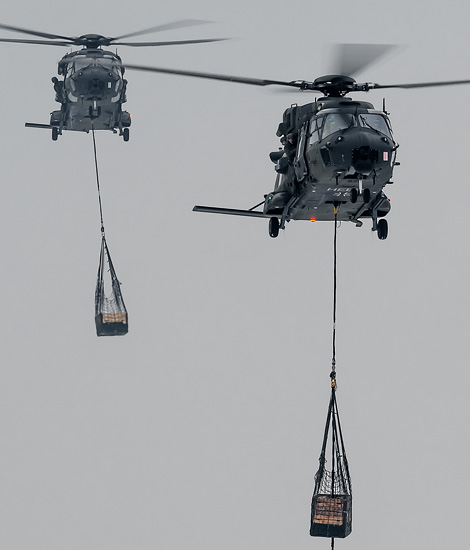
|
A Dutch-German Sling Training; Edese Heide, January 23, 2019
Rigging Heavy Cargo at the Heath; Text and Photograph's by Alex van Noye
In the fourth week of January 2019, the Dutch and German air supply units of the Division Schnelle Kräfte trained together on the Edese Heide in the Netherlands. The goal of the training was to be able to operate with each other. This means with each other's material and by training a joint NATO standard procedure.
In order to be well prepared for the future deployments of the Dutch and German cooperation between the Airmobile Brigade and the Division Schnelle Kräfte, joint training is regularly organized. For several years, the Dutch Airmobile Brigade has been integrated with its German counterpart the "Division Schnelle Kräfte". The Division Schnelle Kräfte (DSK), is formally German, and is composed with a few airborne units and a number of associated helicopter units. The DSK is composed of the 1 Luftlandbrigade and the Kommando Spezialkräfte (Special Forces) from Germany and the 11 Airmobile Brigade from the Netherlands. In addition to these army parts, flying units which operate with helicopters are also assigned to the DSK. The German units which belong to this organization, are; Transporthubschrauberregiment 10 (THR 10), THR 30 and Kampfhubschrauber- regiment 36 (KHR 36). In the Dutch part, the 11 LMB is supported by the helicopters of the (Defense Helicopter Command) DHC. These units are the 298 squadron, the 300 squadron and the 301 squadron with helicopters and the 336 squadron with Hercules transport aircraft. The Dutch flying units are on the contrary of the German flying units an independent part and are not part of the DSK, but are part of the Dutch Defense Helicopter Command (DHC). When the helicopters of the DHC and the soldiers of the 11 LMB operate together, they form the 11 Air Maneuver Brigade (11 AMB).
Since the cooperation between the Dutch and German airmobile units has been deployed, the exercises that are carried out jointly are also becoming increasingly intense. The integrated DSK achieves an ever higher state of deployment, because the military have increasingly trained the procedures and processes together. At the end of 2018, a large-scale joint exercise was held in the Netherlands under the name Falcon Autumn. This exercise was entirely focused on the Air Assault branch of the brigades. At the Edese Heide a "slingery" exercise took place on Wednesday, January 23rd.
|
|
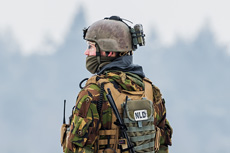
|
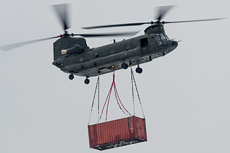
|
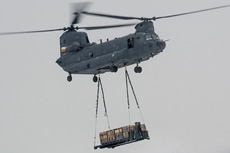
|
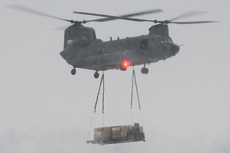
|
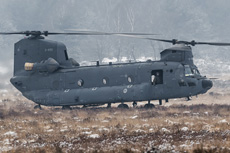
|
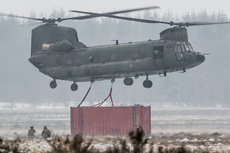
|
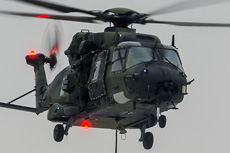
|
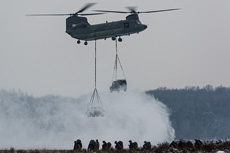
|
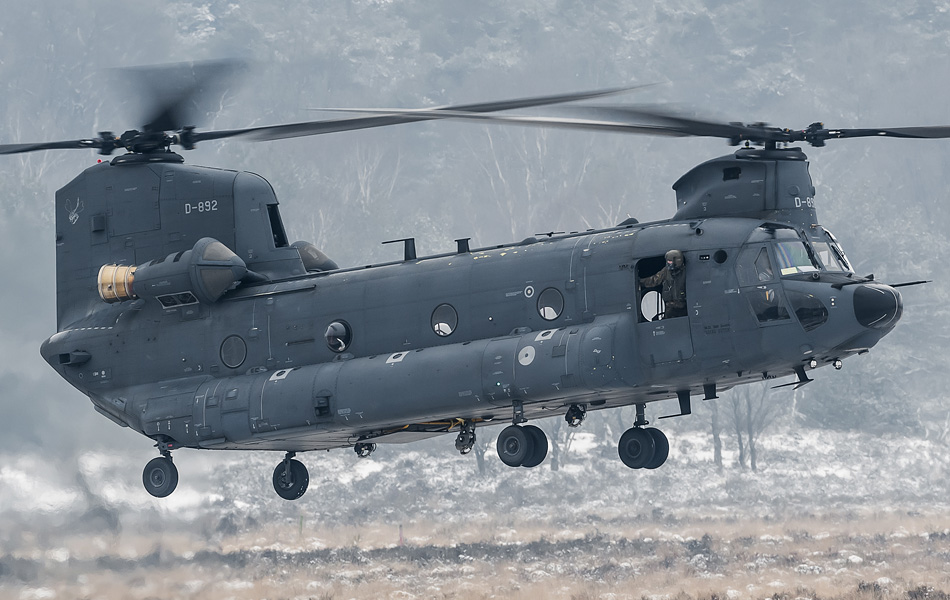
|
During this exercise, the Air Assault was not trained, but the focus was on the logistic part of the LMB. In the slingery exercise of January 2019, the main objective was to further integrate the Dutch and German deployment of helicopters with the DSK and LMB troops. This exercise was also used to complete the training of the "Rigger Marshalls". During this training, both German and Dutch soldiers learn how to properly and securely place cargo under helicopters. An external cargo load under a helicopter is referred to as a "Sling Load". The helicopters which participated in the exercises would fly from Gilze-Rijen. Three CH-47D/F Chinooks from the 298 Squadron were used for the exercise. Also two AS532U2 Cougar helicopters from the 300 Squadron flew along. The Germans participated with two NH90 TTH Caiman helicopters of THR 10 and THR 30. On the ground, soldiers of the 11th Supply Company (11 BeVoCie) and the Stabs- and Versorgungskompanie (StVersKp) were deployed.
The exercise was led on the ground by the soldiers of the 11 BeVoCie. This unit of the 11 LMB specializes in the supply and removal of supplies and freight in the field. The loading and unloading of heavy freight with the help of helicopters is also called "rigging" in the technical jargon of the airmobile. During rigging, cargo is transported externally under the helicopters. This can vary from light packages in nets to complete trucks being transported. The word rigg is derived from the English word "rigging". This term describes the design and installation of equipment during the preparation to move objects. A team of riggers installs a lifting or rolling installation which is needed to lift, roll or slide objects. In the building world, materials are often lifted with a crane, the airmobile does so with helicopters. In essence, there is no difference between the way of lifting. The LMB team which is going to move the load has materials such as steel cables, turnbuckles, towbars and jacks. The rigging systems which are hung underneath the helicopters often consist of closures, main links, slings and lifting nets. For the safe movement of heavy army material, it is important that the soldiers of the DSK and the LMB are well trained in this. It requires a good insight, for example, to hang an entire truck correctly under a helicopter. This is because the cargo has to be fixed stably under the helicopter, so that the helicopter is stably suspended in the air and can safely move the load. To be able to do this properly requires a lot of training for the people on the ground and in the helicopters.
During the slingery training the helicopters flew their missions daily from Gilze-Rijen air base. The helicopters would be relocated to Deelen airbase which was close to the landing zone on the Edese Heide. The helicopters would pick up their cargo at Deelen each time before they would drop off at the Edese Heide. In total, six landing spots were defined on the heath. The helicopters would land here to drop their precious cargo. The NH90s and the Cougars would carry the light loads which were often carried in the form of nets under the helicopters. The Chinooks mainly moved large elements, such as complete sea containers, pallets with cargo and complete vehicles and trucks. The snowfall of the day before, brought with it an extra level of difficulty for the pilots and the loadmasters of the helicopters. The blowing snow often blocked the visibility in the landing zone. A landing in a snowy area is referred to as a "white out landing". In order to better see the Rigger Marshalls on the ground, these soldiers usually wear green sleeves on their uniforms. The load master of the transport helicopters can still see the instructions of this person through the clouds. In total, three sling load flights were carried out in daylight by all helicopter units. The helicopters were always flying between the landing zone and Deelen Air Base. After this training a new batch of Rigger Marshalls would be qualified to move large quantities of cargo in the field with the help of helicopters and its crew.
|
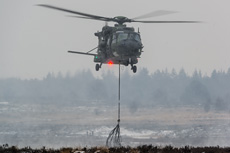
|
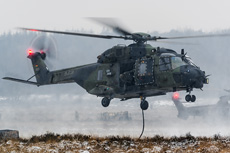
|
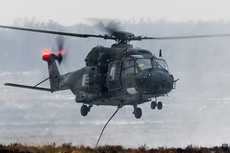
|
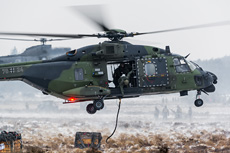
|
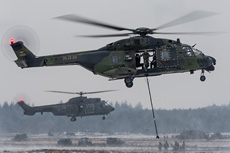
|
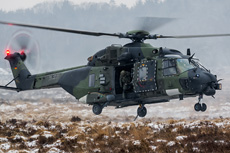
|
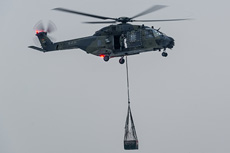
|
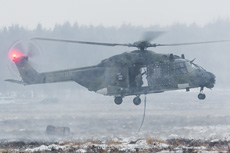
|
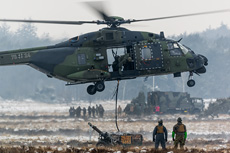
|
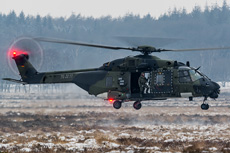
|
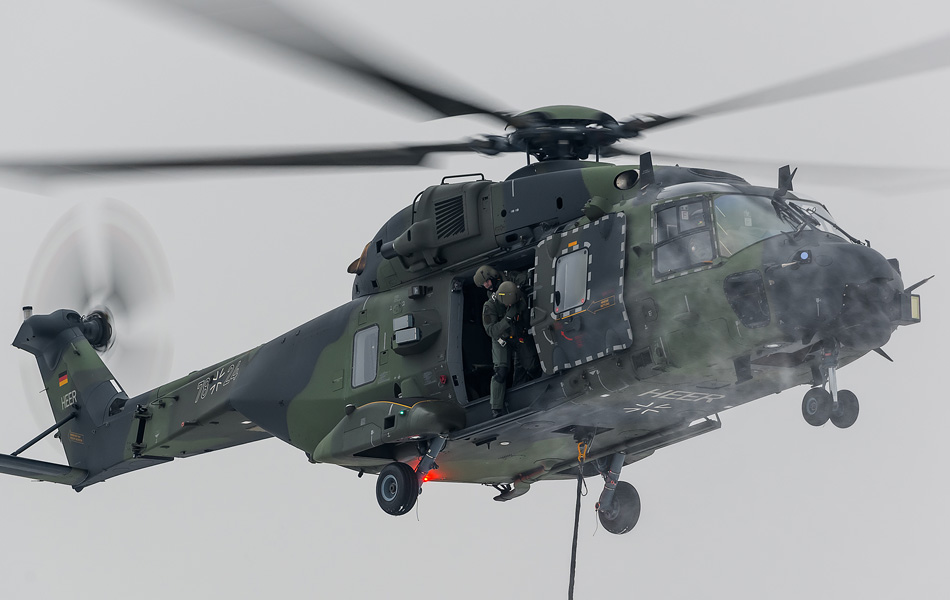
|
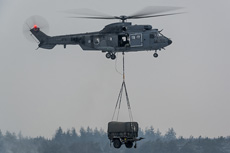
|
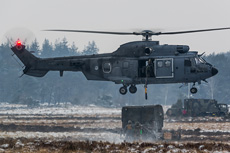
|
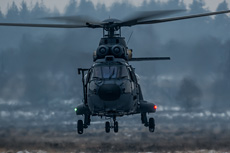
|
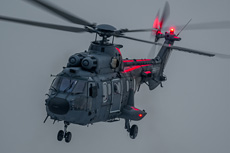
|
|
|

|







